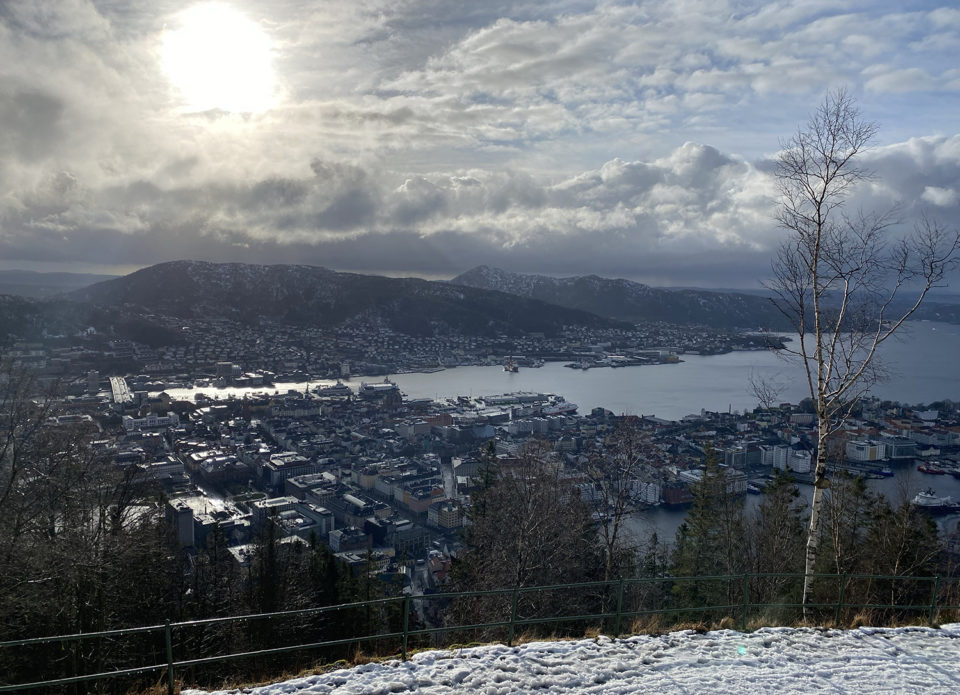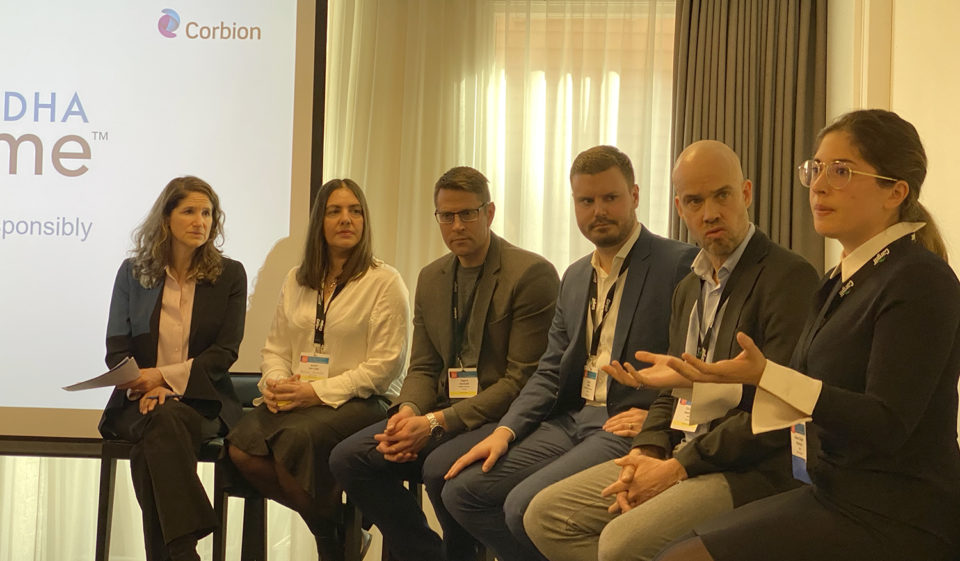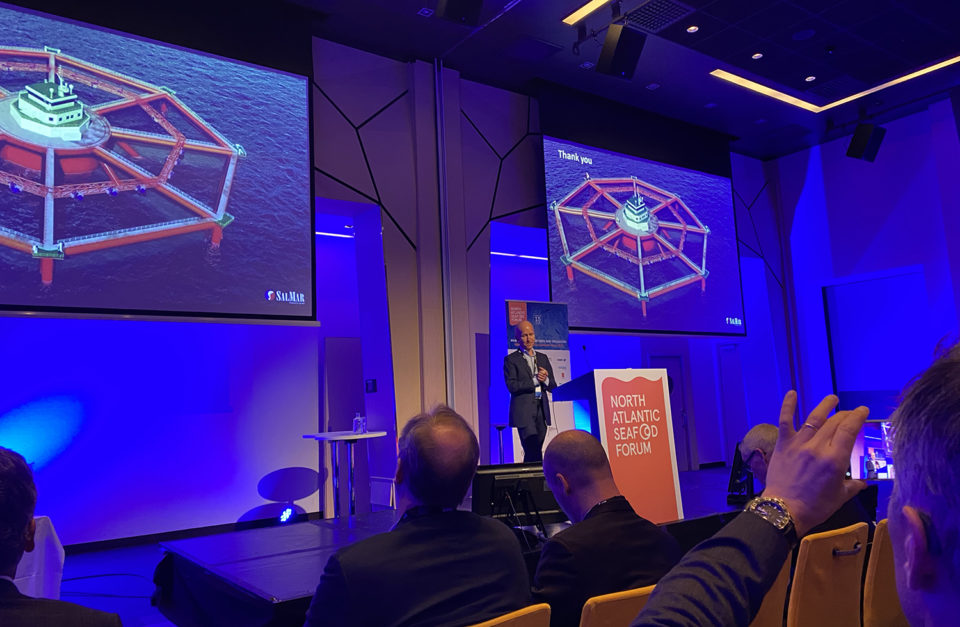World’s largest seafood business conference held in Bergen amid escalating coronavirus fears

C-level seafood executives from around the world gathered in Bergen, Norway, last week to discuss issues and opportunities for fisheries and aquaculture, including climate change, increasing production, technology innovations, environmental sustainability and the coronavirus (COVID-19) that is stoking fears worldwide, slowing industries and threatening vast economic impacts.
When the news broke that Seafood Expo North America in Boston – scheduled just two weeks ahead – was being postponed or even canceled as a result of the infectious disease and the dangers it presents to attendees, it prompted speculation that other events would also be affected. Many presentations referred to impacts already being felt or needed actions to overcome the challenge.
For this year’s North Atlantic Seafood Forum (NASF), attendance was indeed slightly down from previous iterations, according to the event organizers, who opted to live-stream the Day 1 morning program for those who opted not to travel to Norway. But for those who did come to the Radisson Blu Royal Hotel on Bergen’s storied waterfront, the program covered a wide range of subjects, and didn’t shy away from tough ones.
Climate change requires action
The oceans are our best defense against climate change but are nonetheless a “victim.” Climate change brings about much uncertainty for the seafood industry, said Vidar Helgesen, representing the High Level Panel for a Sustainable Ocean Economy, a group of world leaders seeking to develop solutions for the environment. The countries represented in the 14-member panel represent about 30 percent of the world’s exclusive economic zones (EEZs), he said, and issued a comprehensive report last year.
The biggest risk, added Helgesen, is what we don’t know about ocean ecosystems, which is a lot: “These ecosystems work well, and everything is OK until it isn’t. There are cascading effects, with dramatic results. We need to deal with the uncertainty and take action.”
Climate change impacts on the global ocean economy could be severe, with up to a 30 percent decline in fish stocks in the Atlantic, Pacific and Indian Ocean basins by the year 2100, he said. The impact on West African countries’ fisheries could be tragic, with a stock decline of up to 85 percent. With warming ocean temperatures, fish stocks will migrate to the north and south poles, with people living on or near the equator “losing out big time.”

A picture such as this can naturally be seen as gloomy, yet the authors of the report presented an “opportunistic view,” said Helgesen, concluding that seafood production must increase to meet demands from a growing global population. Helgesen recommended two ways to accomplish this: Increase aquaculture production and improve fisheries management.
“Fisheries management is so bad in so many places, that if you improve fisheries management, you can increase catch,” he said – in fact, wild-capture fisheries could actually increase production by as much as 20 percent: “Conventional wisdom is that we’re up against the ceiling, that is not correct.”
“Seventy percent of our world is ocean, but only 5 percent of our food comes from it. It’s an imbalance that needs to be corrected,” added Helgesen, adding that sustainable and climate-resilient marine aquaculture can be an important part of the solution for some countries. For Norway’s world-leading salmon aquaculture sector, this will require strong environmental action on feed, disease, lice and escapes.
Aquaculture has “bright prospects,” Helgesen said – the panel’s report concluded that production could be ramped up significantly, up to six times its current size: “On marine aquaculture, we were stunned to learn that mariculture can be six times bigger than today. Especially for low-trophic aquaculture – shellfish hold enormous protein value and don’t have to be fed. It’s an economic opportunity, but also an opportunity for human health and nutrition. It’s a planetary opportunity and more land- and biodiversity-friendly.”
Guus Pastoor, president of AIPCEE (European Fish Processors Association) in Brussels, Belgium, told NASF attendees that they have a common responsibility to find solutions to climate change. He is buoyed by the fact that many seafood stakeholders have been successful in warding off the “total depletion” of fish stocks that many had predicted.
“Now we’re in the climate debate and there are many gloomy outlooks. Seafood is very much related to the state of nature, so we are very vulnerable in this sense,” said Pastoor. But mass depletion of fish stocks “didn’t happen because many people felt a sense of responsibility, took action and [learned to manage fisheries].”
Retailers are bearing the brunt of the responsibility when it comes to driving change in the food industry, and change the food industry must, said Giles Bolton, director of responsible sourcing at UK-based retailer Tesco.
“Much too much of the food industry is unsustainable. The food industry is at the heart of the climate change crisis. The food industry has to change,” said Bolton, adding that Tesco wants to reduce the environmental impact of the “average UK shopping basket” by 50 percent. Reducing waste will play a big role.
This is a job for technology
During the NASF Aquatech session on Day 0, a number of technology providers presented on how innovation will move aquaculture forward and tackle major issues, including climate change. Tiago Cristóvão, COO of UNDERSEE, a technology company based in Portugal, said that the ocean is “critically under-sampled” when it comes to gathering data on water quality, despite the fact that the oceans are our planet’s “biggest asset.”
UNDERSEE’s water quality monitoring and forecasting technology can help aquaculture survive the short-term impacts of climate change, including the onset of harmful algal blooms, he said. Undersee – which started in 2016 doing work for environmental agencies in Portugal – can determine algal blooms’ position and size and provide forecasts that satellites cannot, especially with cloud cover.
Another company providing insights into ocean conditions for aquaculture producers is Ecotone, which won Norway’s Christmas Entrepreneur Challenge last year. Ecotone’s Spectralice helps salmon farmers tackle the sea lice challenge and its Spectramapper provides an environmental classification of seafloor conditions. Using remote-operated vessels, Spectramapper fills a knowledge gap with machine learning and can provide assistance for ecosystem-based monitoring. For an in-depth look at Ecotone, click here.
Norway-based CageEye AS aims to improve the feeding of fish with a “fish-centric” hydroacoustic technology that maximizes growth and minimizes feed waste by measuring changes in fish behavior and detecting feeding patterns. Another camera-vision provider to aquaculture is OptoScale. CEO Sven Jørund Kolstø spoke about the company’s five-year journey from “startup to scale-up” and its aims to reduce overfeeding. The problem he said, often stems from farmers not knowing what they have in underwater inventory.
“Biomass estimation is at the heart of everything,” he said. “In fish farming today, there is no really good way of measuring optimal production, whether you’re going at the right speed or not. We’re giving [our customers] a speedometer.” OptoScale is already working with industry stalwarts SalMar, BioMar, Cermaq and others.
Kolstø’s advice to fellow startups was simple: “Don’t jump into scale-up before you know you’re ready. What you want to do is become a real company. Scale up too soon, you’ll have a product that customers don’t want … and boring is good – the goal of a startup is to deliver value and reliability.”

Investors want predictability
Stål Heggelund of the Federation of Norwegian Industries said the aquaculture business in Norway has been “enormously successful” and sees many of the aforementioned technology companies as “investment grade” despite their age.
“There’s no reason to not look into this sector,” he said.
F.S. Gomes, CEO of Pontos Aqua in Portugal, said aquaculture has historically been set back by a “lack of informed capital” and disruptive innovation that’s “not disruptive enough.” But overall the need, he said, is for more reliable data to make aquaculture more predictable.
“Lack of data is a problem when it comes to novel health solutions,” he said. “There is an enormous opportunity for capital and sustainable gains by bringing more predictability.”
Gomes also succinctly described the difference between impact investment and institutional investing: “You can make money doing the right thing. With impact, the value is from the idea, but with institutional, it’s about the execution.”
Anne Hvistendahl, head of global seafood for DNB, Norway’s largest financial services group, said that Norway’s enormously successful salmon farming industry must innovate its way to a new growth curve in production, which has plateaued since 2012.
“Productivity is declining in salmon industry [in terms of] licenses, employees and capital,” she said. “Bigger and better is now new and different. The supply side will be fixed, volumes will increase, but productivity drives value creation today, innovation drives value creation tomorrow.”
Hvistendahl’s colleague Dag Sletmo, senior VP at DMB, furthered that message when he hinted that the sector may have shifted its risk tolerance in recent years: “When we choose between good things we become risk averse; there’s no sense of urgency. Innovation can take us from a one-size-fits-all to a multi-dimensional world with winners and losers. It’s not all about execution anymore, strategic choices are increasingly important. Innovation is not just about technology, it’s about management too.”

The offshore frontier
Atle Eide, chairman of SalMar, said that technology is the basis for aquaculture’s growth. Eide detailed the company’s new, massive offshore salmon farm called Ocean Farm 1. It has the capacity for 1.5 million salmon, representing what he believes is a “new frontier for salmon farming.”
Eide said it is Norway’s duty to remain at the forefront of salmon aquaculture and developing new technology will safeguard its position. Norway currently produces 1.35 billion metric tons (MT) of salmon annually, using just 0.02 percent of the 2 million square kilometers of sea area that Norway currently controls.
“It is environmentally and ethically indefensible of Norway not to [develop this industry] important resource,” he said. “The technology for salmon farming 10 years from now will look very different than how it looks today. It’s undergoing a huge development, one we haven’t seen before, with an influx of competence of young people who do not want to work in oil and gas.”
Offshore aquaculture can benefit from the oil industry’s knowledge and expertise, Eide said. With aims to increase salmon aquaculture production by the year 2050 to 5 million MT, aquaculture will have to follow the oil industry’s lead in another regard: “Aquaculture growth will generate enormous value to our society. Colossal investment will be required if we are to realize the growth target. levels we have not seen in Norway since the golden age of oil exploration.”
Forecasting production
Marcio Castro de Souza, senior fisheries trade officer for the United Nations’ Food and Agriculture Organisation (FAO) in Rome, said that aquaculture production will surpass wild capture fisheries, for all purposes, human consumption or not, in 2022. Despite this, reports that 90 percent of global fish stocks are in danger is simply “not true,” saying that fishing to maximum sustainable yield is the goal.
“Aquaculture continues to perform well,” he said. In 2018, overall aquaculture production reached 114.5 million metric tons (MT), a 2 percent growth rate overall and a 3.2 percent growth rate with aquatic animals.
Breaking production down by sector, Castro de Souza said that finfish accounted for 54.2 million MT in 2018 (2.9 percent growth); crustaceans totaled 9.4 million MT (8.8 percent growth); and mollusk production reached 17.5 million MT (1.2 percent growth). By region, Asia is the clear leader at 72.8 million MT (up 3.1 percent), followed by the Americas at 3.8 million MT (up 5.5 percent) and Europe at 3.0 million MT (up 2.0 percent).
Follow the Advocate on Twitter @GAA_Advocate
Now that you've finished reading the article ...
… we hope you’ll consider supporting our mission to document the evolution of the global aquaculture industry and share our vast network of contributors’ expansive knowledge every week.
By becoming a Global Seafood Alliance member, you’re ensuring that all of the pre-competitive work we do through member benefits, resources and events can continue. Individual membership costs just $50 a year. GSA individual and corporate members receive complimentary access to a series of GOAL virtual events beginning in April. Join now.
Not a GSA member? Join us.
Author
-

James Wright
Editorial Manager
Global Aquaculture Alliance
Portsmouth, NH, USA
Related Posts

Innovation & Investment
Bergen becoming seafood startup city as accelerator Hatch sets up shop
Hatch Aquaculture Accelerator aims to support new companies, via an immersive three-month mentorship program, in the health, nutrition, technology and production sectors.

Innovation & Investment
Aquafeed ingredient AlgaPrime wins GAA Innovation Award
A proliferation of alternative feed ingredients has allowed aquaculture to extend the natural resources it depends on. AlgaPrime, packed with the long-chain omega-3 fatty acid DHA, is being recognized as a game-changing innovation for aquaculture feeds.

Responsibility
Healthy planet: Recap of Day 3 at GOAL
On the third and final day of the Global Aquaculture Alliance’s annual GOAL conference, held in Guangzhou, China, the theme of “healthy planet” permeated every presentation. Innovation, investment, efficiency, transparency and improvement are the clarion calls for aquaculture.

Innovation & Investment
Norway showcases halibut farm as sustainability star
Recognizing its potential as a sustainable fish producer, Norway highlights land-based halibut farmer Sogn Aqua in the debute of The Explorer digital showroom. The Advocate recently paid a visit to the farm in Ortnevik.

